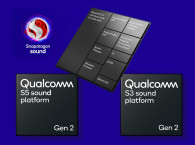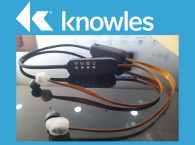Qualcomm has been extremely successful in its approach to deliver the technology platforms that manufacturers and brands need for smartphones, tablets, wearables, true wireless earbuds, and with it, expand the adoption of its key underlying audio technologies, which include the aptX family of codecs (now available in a more evolved combination with aptX Adaptive), combined with TrueWireless Mirroring, Active Noise Cancelation, aptX Voice, and new 3D/spatial audio tools. Everything needed for a manufacturer dependent on Google's Android OS to deliver solutions that seem to compete head to head with what Apple offers - differentiated with a more complete set of features and options for developers.
The Snapdragon Sound audio systems also are intended to foster the evolution toward high-resolution audio transmission and 32kHz super wideband voice quality, or what Qualcomm now calls aptX Voice. This means taking all current Snapdragon mobile processors, Qualcomm's Aqstic Audio Codec and Aqstic Smart Speaker Amp, all its Bluetooth Audio QCC SoC families (QCC514x, QCC515x, and QCC30XX), and the before mentioned audio technologies, to enable a new generation of products that all support better quality audio.
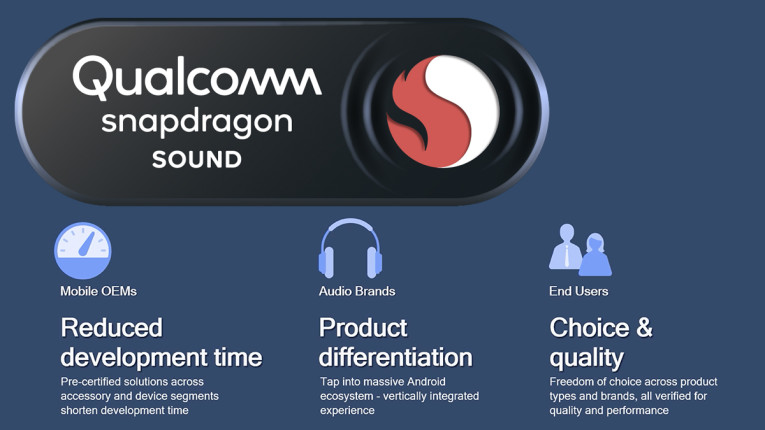
I thought I should share those replies with our readers first-hand, before diving further into a dedicated article for the magazine.

Question 1: How can manufacturers and new brands benefit from the Qualcomm Snapdragon Sound?
Qualcomm: Currently with Bluetooth there is a huge variation in the user experiences between devices. There are so many different components and technologies that need to work together to deliver audio over Bluetooth between the earbud and phone (i.e., the SoC, the connectivity, the OS, and the audio codec). Consumers aren’t currently getting a consistent wireless audio experience due to this huge range of options. With Qualcomm Snapdragon Sound, we are addressing these disparities and ensuring that the end user has a consistently exceptional wireless experience, essentially we have designed Snapdragon Sound to deliver a wired audio experience wirelessly, whether it’s for gaming, listening to music, or making calls.
By focusing on the complete end-to-end audio system, as opposed to a single device, we are able to deliver innovation that solves these consumer pain-points across the entire audio chain. We think audio is the next “battleground” for mobile, just as a camera is a key differentiator today. For our mobile customers, Snapdragon Sound provides an opportunity to differentiate with great performing sound, coupled with seamless out of box experiences. Pre-certified solutions across device segments will also help them get to market fast with reduced development time and cost. Audio OEMs will be better positioned to compete with vertically integrated ecosystems, enabling them to tap into a massive Android ecosystem.
Snapdragon Sound will make it easy for consumers to identify the products that sound best together while expanding their choice. Our comprehensive interoperability test program is central to this. Each and every device that carries the Snapdragon Sound branding will be rigorously tested for performance across latency, voice call quality, music quality, and robust connectivity.
We have several partners in the overall Qualcomm Snapdragon Sound supply chain and we will issue these details in due course.
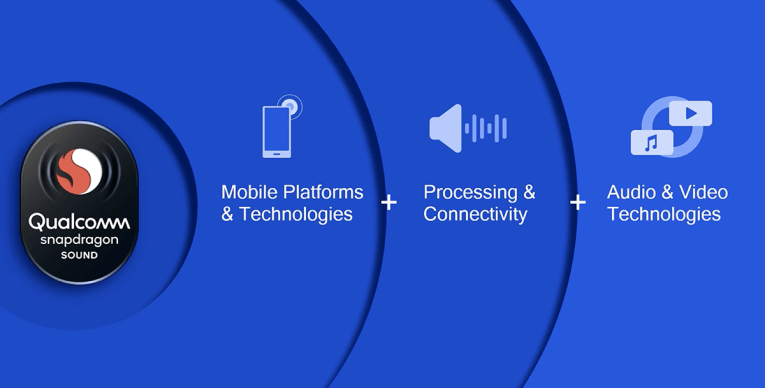
Qualcomm: We will release the test criteria to developers so they can clearly understand what is expected, such as THD+N, SNR, Frequency Response, latency (WALT and “tap to tone”), and robustness.
Both Source and Sink devices will be tested for Qualcomm Snapdragon Sound.
Question 3: Other than TWS earbuds, what types of audio products are the target use cases? Considering the integration with Qualcomm Aqstic DAC, designed to support formats of up to 32-bit/384kHz PCM and DSD, are we talking about dedicated portable DACs, hi-res players, and media servers, as well?
Qualcomm: In the short term, the focus is Android handsets to earbuds and headsets. Looking down the road wherever content is being shared wirelessly and that puts Smart Watches, PCs TVs, Automotive, and AR/VR as target devices. We have a comprehensive roadmap for Snapdragon Sound and have made significant investments to deliver new feature sets to continually improve the wireless audio experience.

Question 4: Considering Bluetooth devices with aptX Adaptive. What will be the differences in source and sink designs - proportional cost, size, and power constraints?
Qualcomm: The Source side, in the first wave, will be largely Smartphone-centric whereas the Sink devices will be earbuds. Part of the tangential value of an integrated approach of Qualcomm Snapdragon Sound will be battery saving, which is consistent on SOCs on both sides of the Bluetooth audio equation.
Question 5: 24-bit/96kHz audio transmission over Bluetooth. Is Qualcomm considering any support for a lossless option as part of the aptX Adaptive platform? Or a new compressed option of high-resolution audio over Bluetooth?
Qualcomm: Technically the aptX Adaptive codec was designed to be scalable and has the capability to provide CD Lossless. Given the heat in the market for Lossless, it would be brilliant if Qualcomm Snapdragon Sound can deliver the “last yard” via Bluetooth. Today, 24-bit/96kHz is available via Qualcomm Snapdragon Sound and with QHS delivering more data throughput along with additional robustness we’re excited about the future possibilities.
Question 6: Does Snapdragon Sound consider support for other wireless transmission options, such as Wi-Fi?
Qualcomm: Currently we are focused on Bluetooth and see the possibility to delivering high-quality, stable audio with minimal lag to ensure an optimum user experience.
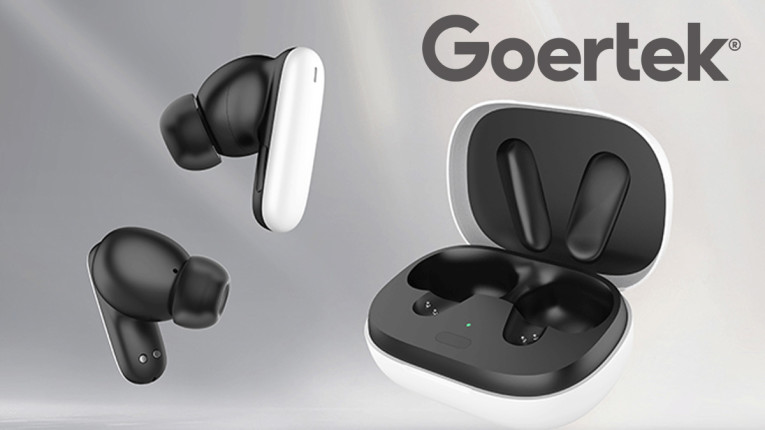
Qualcomm: For LE Audio to be supported, it needs to be on the source device – such as a smartphone or laptop – as well as the audio accessory. We already have platforms available for both source and accessory today that are designed for the forthcoming LE Audio standard. These include our Qualcomm QCC305x SoCs for true wireless earbuds, and our Qualcomm Snapdragon 888 Mobile Platform.
The Bluetooth SIG has yet to fully ratify the LE Audio standard, but we are pleased to be working with them and are excited about the new era for Bluetooth audio. Looking ahead, we continue working to deliver highly-integrated, dual-mode Bluetooth technologies, with robust support for the LE Audio use cases.
Qualcomm Snapdragon Sound is an evolving technology and an exciting roadmap. We’ll be doing everything we can to ensure the consumer can enjoy content wirelessly via Bluetooth as they did with the old audio cable. aX
This article was originally published in The Audio Voice newsletter, June 24, 2021 (#333)






